DNA Route Cuba, a Journey to Our Roots
especiales

“Who are we? And how did we get here? This is a journey to our roots, here we will seek to learn about our past through DNA, a unique witness to history that is present in every cell of our body…”
This is how DNA Route Cuba presents itself, a documentary series of six feature–length films that explores our identity, our roots, and our genetic heritage through the history and personal memory of six Cubans. It is an extraordinary meeting between art and science that talented filmmaker Alejandro Gil has brought to the screen.
In this regard, the director of films such as Inocencia and La emboscada stated, “I actually like all six episodes very much, I have no preference for any particular one. I say this publicly because we achieved something that is an expressive and narrative unity where it is interesting to see how science becomes involved with an artistic narrative and adds understanding, encouraging the viewer to create a dialogue with what is happening, because this study of DNA is truly something novel, it is almost science fiction what can be achieved with it.”
The series is based on scientific research carried out by Doctor of Sciences Beatriz Marcheco and features actor Osvaldo Doimeadiós, singer–songwriter Silvio Rodríguez, volleyball player Mireya Luis, visual artist Roberto Diago, anthropologist Nelson Aboy, and researcher Zuleica Romay.
“Each character is a very different experience,” said Alejandro Gil, adding that “seeing the documentary on the big screen is truly impactful. To see how the photography, the image, feels in the cinema and creates a dimension and an expectation in me knowing the direction the documentary takes, what its course is. To see how the images break onto the big screen and begin to engage in a very interesting dialogue with the viewer… I felt that in the audience, which is the most important recipient, the one who truly evaluates you.”
After two episodes have aired, Gil is confident that audiences will find in each Thursday premiere distinct ideas and sensations, “because they have very different, very particular paths and situations. We had to confront challenges and also appreciate and embrace all the opportunities that each of the episodes and each of the characters gave us.”
The protagonist of the most recently released episode, Zuleica Romay, said, “I truly feel honored to participate in the project. I remember that when I met Beatriz we had presented the book by Henry Gates in which he interviews, follows, and reconstructs the genetic history of major figures in American sports, science, and culture, all of them Black. That book was translated in Cuba and published under the title In Search of Our Roots, and Beatriz and I met at the Saturday Book event where it was presented.
“Later, in conversation about that experience, she, who is a very bold woman, told me: I believe it would greatly help our understanding of who we are if we did something like this in Cuba. We looked at each other in silence and almost said at the same time: but with Cubans of all skin tones, unlike the Americans in the book, who were all Black and who, given their own particular issues, felt the need to demonstrate that Blackness is, in the end, the cover of a great mixture, of what we human beings are, mestizos of countless crossings, as Fernando Ortiz said.
“That is how the project began, with more than twenty people from different areas of social activity in Cuba, and I was one of them. I never imagined that I would end up involved in the film project, which was Beatriz’s dream, but which at the time seemed very far–off to us.”
On the moment her story reached the screen, Zuleica recounted, “When Beatriz put me in contact with Alejandro, I was conducting my own research on a great–grandmother who was born in a slave barracks and who, because of those laws of the Spanish authorities that gave every advantage to landowners and slaveholders, probably spent her childhood in the same place where her parents had been forced to serve, and was possibly treated as an enslaved person herself. That story, which I learned in my adolescence, marked me deeply, but for many years it was like a seed, something that grew without my being fully aware, until, as a much older person with certain investigative skills, I set out to trace my great–grandmother’s path to the small town where that sugar mill and those slave quarters had once stood. It was at that moment, while I was doing this, that I met Alejandro. I think I was also very fortunate that we met at that particular moment.”
In a production where each character reveals who they are and their origins, creating a comfortable atmosphere and minimizing the pressure of being in front of a camera was essential for Alejandro Gil. “In this type of work, spontaneity and instinct are what guide you in positioning the cameras, because you do not know what is going to happen. Even Zuleica might have a sense of what is in her episode, but there is also that other part where she is surprised within the audiovisual itself, and we are pioneers in this regard. That means we had two cameras trying to capture those moments that result from great spontaneity. You never know when an emotion or a doubt may appear… and it is the same with all the episodes. As you go deeper into your imagination and your family memories, and the doctor or your own personal experience takes you to certain places, the camera has to be there, but the important thing is, and I will repeat this, that the camera is like a ghost, it is there but they are not looking at it.”
He emphasized the high level of complexity of filming in spaces that are far from ideal, “very noisy neighborhoods, for example, but we had to work there. We could not create a polished, artificial staging. We worked in the places where the protagonists lived, and the exterior movements were determined by the possible, unscripted dramaturgy. In other words, the life of the documentary itself, what the camera was capturing, our own experience, is what later became the visual identity of the documentary and of each episode.
“It was an interesting process that demands a strong awareness of what you are doing, because there is no take two. What one camera captures, if it captures it well, and if not, you have to harmonize your aesthetic judgment with what is happening in the most objective part, which is the conversation between the doctor and the protagonist of the episode.”
Translated by Sergio A. Paneque Díaz / CubaSí Translation Staff



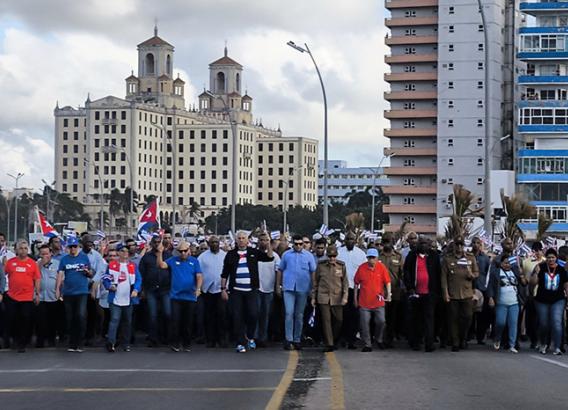
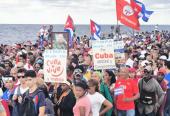
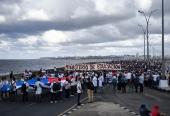
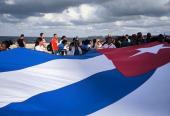
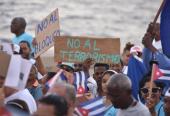
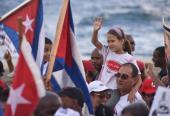
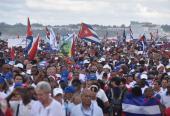




Add new comment